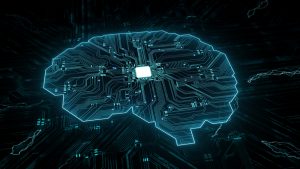In our 2024 technology predictions roundup, we explore our expectations for key technologies, such as digital immune systems, generative AI, and more.
As 2023 shifts into the rearview mirror, technology and business leaders are preparing their organizations for the upcoming year. And industry watchers have begun to make their technology predictions for 2024.
Last year, organizations prioritized efficiency and cost reduction while facing soaring inflation. This year, they’ve been asked to do more with less, innovate faster, and tame the ever-increasing complexities of modern cloud environments.
These ambitious goals require new approaches—and attaining them has surpassed humans’ ability alone. That’s why many organizations are turning to generative AI—which uses its training data to create text, images, code, or other types of content that reflect its users’ natural language queries—and platform engineering to create new efficiencies and opportunities for innovation.
Data indicates these technology trends have taken hold. Indeed, according to a recent Dynatrace survey, 83% of technology leaders said AI has become a requirement. And a staggering 83% of respondents to a recent DevOps Digest survey have plans to adopt platform engineering or have already done so.
In this blog, we’ll discuss our predictions for 2024 regarding the future of observability, the most significant AI trends, and other technologies that will power the next wave of transformations in organizations worldwide.
Technology prediction No. 1: Composite approaches to AI will become central to success.
A wave of generative AI solutions, including OpenAI’s ChatGPT, emerged in late 2022. As they progress through the hype cycle in 2024, organizations will realize these technologies, while transformational, cannot deliver meaningful value alone. As a result, organizations will move toward a composite approach to AI.
Composite AI combines generative AI with other types of artificial intelligence to enable more advanced reasoning and to bring precision, context, and meaning to the outputs that generative AI produces. For example, DevOps teams will combine generative AI with fact-based causal and predictive AI to supercharge digital innovation by predicting and preventing issues before they occur and generating new workflows to automate the software delivery lifecycle.
Technology prediction No. 2: AI-generated code will create the need for digital immune systems.
In 2024, more organizations will experience major digital service outages due to poor-quality and insufficiently supervised software code. As developers continue to use generative AI-powered autonomous agents to write code, organizations will be exposed to greater risks of unexpected problems that affect customer and user experiences. This is because maintaining agent-generated code will become similar to the challenge of preserving code created by developers who have left a team or an organization.
No one will be around who fully understands the code. Therefore, no one will be capable of quickly resolving problems in the code. Those who attempt to use generative AI to review and resolve issues in the code created by generative AI will find themselves with a recursive problem, as they will still lack the fundamental knowledge and understanding needed to manage it effectively.
These challenges will drive organizations to develop digital immune systems that protect their software from the inside by ensuring code resilience by default. To enable this, organizations will harness predictive AI to automatically sense problems in code or applications as they emerge and trigger an instant, automated response to safeguard user experience.
Technology prediction No. 3: Organizations will appoint a chief AI officer to oversee the safe and responsible use of AI.
According to recent Dynatrace research, nearly three-quarters of IT operations, development, and security teams plan to use AI to become more proactive in executing their work. Therefore, in 2024, organizations will increasingly appoint senior executives to ensure that they are prepared for the security, compliance, and governance implications of AI.
As employees become more accustomed to using AI in their personal lives through exposure to tools such as ChatGPT, they will increasingly look to use AI to boost their productivity at work. Organizations realize if they don’t empower their employees to use AI tools officially, they will do so without consent. Organizations will, therefore, appoint a chief AI officer (CAIO) to oversee their use of these technologies in the same way many have a security executive, or CISO, on their leadership teams.
The CAIO’s role will center on developing policies; ensuring the workforce is educated and empowered to use AI safely; and protecting the organization from accidental noncompliance, intellectual property leakage, or security threats. This will pave the way for widespread AI adoption across organizations. As this trend progresses, AI will ultimately become a commodity, as the mobile phone has.
Technology prediction No. 4: Data observability will become mandatory.
Data observability will become mandatory as organizations seek to drive smarter automation and faster decision making in 2024, according to recent Dynatrace research.
As the volume of data continues to grow, organizations are urgently seeking to ingest and analyze it faster and at a greater scale. However, the cost and risk of poor-quality data is greater than ever. In a recent survey, 57% of DevOps practitioners said the absence of data observability makes it difficult to drive automation in a compliant way.
As a result, organizations will increasingly demand solutions that provide data observability to enable them to rapidly and securely ingest high-quality and reliable data that is ready for analytics on demand. Increased data observability will enable users such as ITOps and business analytics teams to understand not only the availability of data, but also the structure, distribution, relationships, and lineage of that data across all sources, including different platforms in a distributed hybrid and multicloud environment. This is essential to generating insights that users can trust, by ensuring the freshness of data, identifying anomalies, and eliminating duplicates that could lead to errors.
Technology prediction No. 5: Observability will become mission-critical for the C suite in the drive to support the organization’s sustainability and FinOps objectives.
The combined pressure of needing to adopt more environmentally sustainable business practices and tackle rising cloud costs will catapult observability from an IT priority to a business requirement in 2024.
Organizations’ increased use of AI will be a key driver of this trend as it boosts cloud resource consumption, resulting in expanded scope 3 emissions. However, AI-powered analytics of the observability data from cloud environments will help organizations tackle expanding emissions and mature their FinOps and sustainability practices. These analytics can surface actionable insights and power intelligent automation to address hotspots of inefficiency in cloud environments. Furthermore, increased use of AI-powered observability will enable organizations to automatically orchestrate their systems for optimal resource utilization, reducing emissions and the cost of running their cloud environments.
As a result, we will see growing interest in use cases of observability beyond the IT department as the wider business begins to take note.
Technology prediction No. 6: Platform engineering becomes mission-critical.
Platform engineering will become mission-critical in 2024.
Organizations will recognize that a seamlessly functioning and secure software delivery pipeline is equally important to business continuity as the quality and security of the digital services on which end users and customers rely. Therefore, there will be a shift toward productizing the tooling used to drive DevOps, security, and site reliability engineering best practices. This will bring platform engineering to the fore as organizations codify the know-how and capabilities needed to automate secure software delivery pipelines.
As this trend takes hold, software delivery, security, and operations processes will be triggered through application programming interfaces that automate those tasks, based on real-time insights from observability data.
Technology prediction No. 7: SIEM will become irrelevant as security teams turn to intelligent threat analysis.
In 2024, next-generation threat intelligence and analytics solutions will phase out security information and event management (SIEM) systems. These modern solutions enable security teams to extend capabilities beyond log analytics to access the context provided by a broader range of data modalities and different types of AI working together. These include generative, causal, and predictive techniques. As a result, organizations will gain access to deeper and more accurate, intelligent, and automated threat analysis. This will help to protect their applications and data from increasingly sophisticated threats.




Looking for answers?
Start a new discussion or ask for help in our Q&A forum.
Go to forum